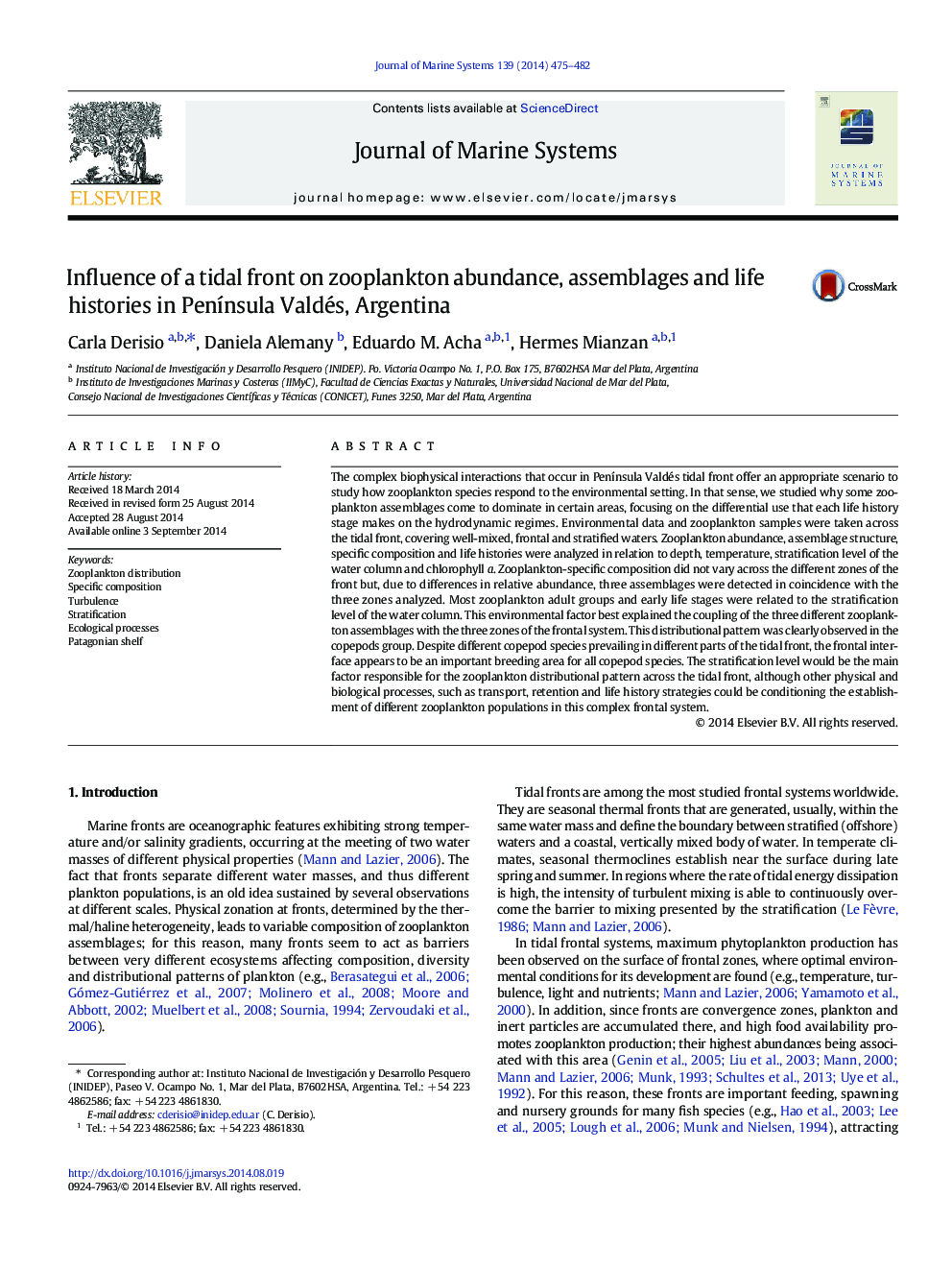| کد مقاله | کد نشریه | سال انتشار | مقاله انگلیسی | نسخه تمام متن |
|---|---|---|---|---|
| 6386984 | 1627290 | 2014 | 8 صفحه PDF | دانلود رایگان |

- PenÃnsula Valdés tidal front is not a physical barrier for zooplankton species.
- Zooplankton assemblages are strongly influenced by the turbulent-stratified gradient.
- The frontal interface acts as an important breeding area for copepod species.
The complex biophysical interactions that occur in PenÃnsula Valdés tidal front offer an appropriate scenario to study how zooplankton species respond to the environmental setting. In that sense, we studied why some zooplankton assemblages come to dominate in certain areas, focusing on the differential use that each life history stage makes on the hydrodynamic regimes. Environmental data and zooplankton samples were taken across the tidal front, covering well-mixed, frontal and stratified waters. Zooplankton abundance, assemblage structure, specific composition and life histories were analyzed in relation to depth, temperature, stratification level of the water column and chlorophyll a. Zooplankton-specific composition did not vary across the different zones of the front but, due to differences in relative abundance, three assemblages were detected in coincidence with the three zones analyzed. Most zooplankton adult groups and early life stages were related to the stratification level of the water column. This environmental factor best explained the coupling of the three different zooplankton assemblages with the three zones of the frontal system. This distributional pattern was clearly observed in the copepods group. Despite different copepod species prevailing in different parts of the tidal front, the frontal interface appears to be an important breeding area for all copepod species. The stratification level would be the main factor responsible for the zooplankton distributional pattern across the tidal front, although other physical and biological processes, such as transport, retention and life history strategies could be conditioning the establishment of different zooplankton populations in this complex frontal system.
Journal: Journal of Marine Systems - Volume 139, November 2014, Pages 475-482